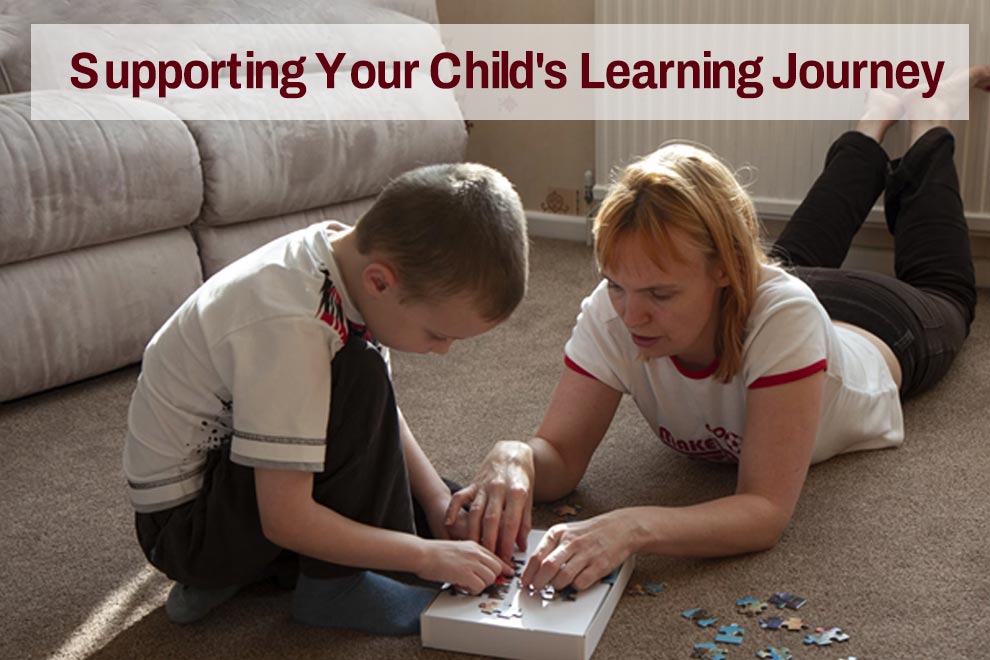Every parent wants to see their child succeed in school, but knowing how to help can feel overwhelming. You’re juggling work, household responsibilities, and trying to figure out the best way to support your child’s education. The good news? You don’t need to be a professional educator to make a real difference. With the right approach and resources, you can create a supportive environment that helps your child thrive academically and personally.
In this article, we’ll explore practical ways you can support your child’s learning journey, from understanding their unique needs to finding resources that actually work. Let’s dive in.
Understanding Your Child’s Unique Learning Needs
No two children learn the same way, and that’s perfectly okay. Some kids are visual learners who need to see information to understand it. Others are auditory learners who grasp concepts better when they hear them explained. Then there are kinesthetic learners who need to touch, move, and experience things hands-on.
Pay attention to how your child naturally approaches learning. Does she doodle while studying? He might be a visual learner. Does your son repeat things out loud? That’s often a sign of auditory learning. Understanding these preferences helps you tailor your support to what actually works for them.
Recognizing Strengths and Challenges
Every child has subjects they excel in and areas where they struggle. Maybe your daughter breezes through reading but freezes at math problems. Or perhaps your son loves science but finds writing essays frustrating. That’s completely normal.
Regular conversations with your child about school help you spot patterns. Ask open-ended questions like “What was the best part of your day?” or “Was anything confusing today?” These casual check-ins give you insights without making your child feel interrogated. When you notice consistent struggles in specific areas, you can address them before they become bigger problems.
Creating a Supportive Learning Environment at Home
Your home doesn’t need to look like a classroom, but having a dedicated learning space makes a huge difference. Find a quiet spot with good lighting where your child can focus. It doesn’t have to be fancy—a clean desk, comfortable chair, and organized supplies are enough.
Building Effective Routines
Kids thrive on routine. When homework happens at the same time each day, it becomes a habit rather than a battle. Maybe it’s right after snack time, or perhaps after dinner works better for your family. Find what fits your schedule and stick with it.
But here’s the key: build in flexibility. If your child had a rough day or there’s a special family event, it’s okay to adjust. The goal is consistency, not rigidity. Balance study time with breaks, play, and downtime. Burned-out kids don’t learn well.
When Professional Support Makes Sense
Sometimes, despite your best efforts, your child needs more specialized help. This doesn’t mean you’re failing as a parent—it means you’re recognizing when additional support could benefit them. Signs to watch for include consistently falling grades, homework taking much longer than it should, or your child becoming anxious about specific subjects.
Different types of support serve different needs. Some children benefit from group classes, while others need one-on-one attention. If you’re considering personalized academic support, look for services that adapt to your child’s individual learning style and pace. For instance, trusted home tuition in Singapore offers customized learning approaches that work alongside what children learn in school, providing the extra guidance some students need to truly grasp difficult concepts.
The right professional support doesn’t replace your involvement—it complements it. You’re still your child’s primary learning advocate.
Engaging Learning Resources That Make Education Enjoyable
Let’s be honest: worksheets and textbooks aren’t always exciting. But learning doesn’t have to be boring. But learning doesn’t have to be boring. Beyond Classrooms provides resources that make educational travel and school trips more engaging. The best educational resources blend learning with engagement, making kids forget they’re actually studying. The best educational resources blend learning with engagement, making kids forget they’re actually studying.
Making Learning Interactive and Fun
Interactive materials capture attention in ways traditional methods sometimes can’t. Think puzzles, games, hands-on experiments, and activities that connect to your child’s interests. When kids are engaged, they retain information better and develop a more positive attitude toward learning.
Look for resources that present information in fresh, appealing ways. Variety matters too—mixing different types of activities prevents monotony and reaches different learning styles.
The Magic of Themed Learning
Here’s a secret educators have known for years: connecting learning to real-world events and celebrations dramatically increases motivation. When math problems involve topics kids care about, suddenly they’re interested.
Seasonal themes work wonderfully for this. Whether it’s holidays, seasonal changes, or special events, themed activities make abstract concepts feel relevant. For example, easter math activities transform standard math practice into something kids actually want to do. Instead of generic addition problems, they’re solving puzzles related to something they’re excited about. This approach works across subjects and age levels.
Printable resources are particularly valuable because you can use them anytime, they don’t require screens, and they’re often free or low-cost. Keep a collection of themed materials for different times of year.
Finding the Right Balance
While digital tools offer great interactive features, don’t underestimate the value of physical materials. Writing by hand, manipulating objects, and completing paper activities develop different skills than screen-based learning.
The sweet spot? Use both. Let your child explore educational apps and websites, but also provide books, workbooks, craft supplies, and hands-on materials. This balanced approach gives them the best of both worlds while managing screen time naturally.
Building Essential Skills Beyond Academics
Good grades matter, but they’re not everything. The skills your child develops around learning often matter more in the long run than any individual test score.
Encouraging Critical Thinking
When your child asks you a question, resist the urge to immediately give the answer. Instead, ask questions back: “What do you think?” or “How could we figure that out?” This teaches them to think through problems independently.
Let them make mistakes. Seriously. When your child struggles with a problem, your instinct is to jump in and help. But working through challenges builds resilience and problem-solving skills. Be available for support, but let them wrestle with difficulties first.
Fostering Independence
As your child grows, gradually step back from direct oversight. Start by having them organize their own materials, then move to planning their homework schedule, and eventually to managing their study time independently.
Teach them to break big projects into smaller tasks, use planners or calendars, and check their own work before submitting it. These organizational skills serve them throughout life, far beyond school years.
The Emotional Side of Learning
Here’s something many parents overlook: emotions directly impact learning. An anxious, frustrated, or discouraged child can’t absorb information effectively, no matter how good the teaching is.
Create an environment where it’s safe to struggle. Celebrate effort, not just results. When your child says “I can’t do this,” reframe it: “You can’t do this yet.” That one word—yet—makes all the difference.
Monitoring Progress and Maintaining Communication
Stay connected with your child’s teachers. Attend parent-teacher conferences, respond to emails, and don’t wait for problems to arise before reaching out. Teachers appreciate involved parents and can provide insights you might miss at home.
Regular communication helps you align your home support with what’s happening in the classroom. You can reinforce concepts they’re learning and get ahead of potential issues.
Track your child’s progress, but avoid obsessing over every grade or comparing them to classmates. Each child develops at their own pace. Document improvement over time rather than focusing on any single assignment or test.
As your child grows, the support they need changes. What worked in first grade won’t work in fifth grade. Stay flexible and adjust your approach as they mature and gain independence.
Conclusion
Supporting your child’s learning journey isn’t about being perfect or knowing everything. It’s about being present, providing the right environment, finding resources that work, and adjusting as needed. Some days will go smoothly; others won’t. That’s normal.
Start small. Pick one strategy from this article and implement it this week. Maybe it’s establishing a homework routine, or exploring new learning resources, or simply having more conversations about school. Every small step adds up to make a real difference in your child’s education and confidence.
Remember, you’re not alone in this journey. Teachers, tutors, and countless resources are available to support both you and your child. Your involvement matters more than you might realize.
FAQs
How much time should I spend helping my child with homework daily?
It depends on age and individual needs. Generally, younger children need more guidance—perhaps 15-30 minutes of your direct involvement. Older elementary students might need occasional check-ins rather than constant supervision. The goal is gradually reducing your involvement as they develop independence. Quality matters more than quantity: focused, helpful support for 15 minutes beats hovering for an hour.
What if my child resists learning activities at home?
Resistance usually signals that something isn’t working. Maybe the material is too difficult, too easy, or presented in a way that doesn’t match their learning style. Try different approaches—make it more hands-on, connect it to their interests, or break it into smaller chunks. Sometimes resistance means they need a break or are dealing with other stress. Talk with them to understand what’s behind the pushback.
How do I know if my child needs extra academic support?
Watch for consistent patterns: grades steadily declining, homework taking much longer than classmates report, avoiding certain subjects entirely, or increasing anxiety about school. If you see these signs persisting for several weeks despite your support, it’s time to consider additional help. Trust your instincts—you know your child best.
Are digital learning tools effective for young children?
Digital tools can be very effective when used appropriately. Look for age-appropriate apps and programs designed by educators, limit screen time according to pediatric guidelines, and balance digital learning with hands-on activities. The key is intentional use—educational games with clear learning objectives work better than passive screen time. Always supervise younger children’s digital learning and discuss what they’re doing.
Also Read: What Makes Project Based Learning Effective for K-12 Students?











